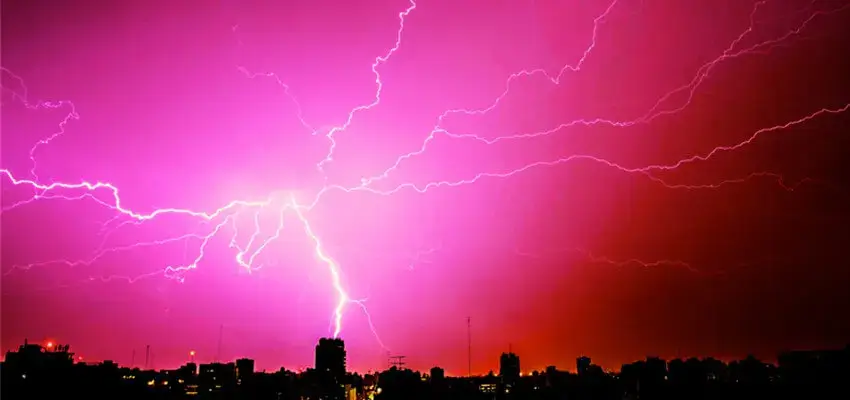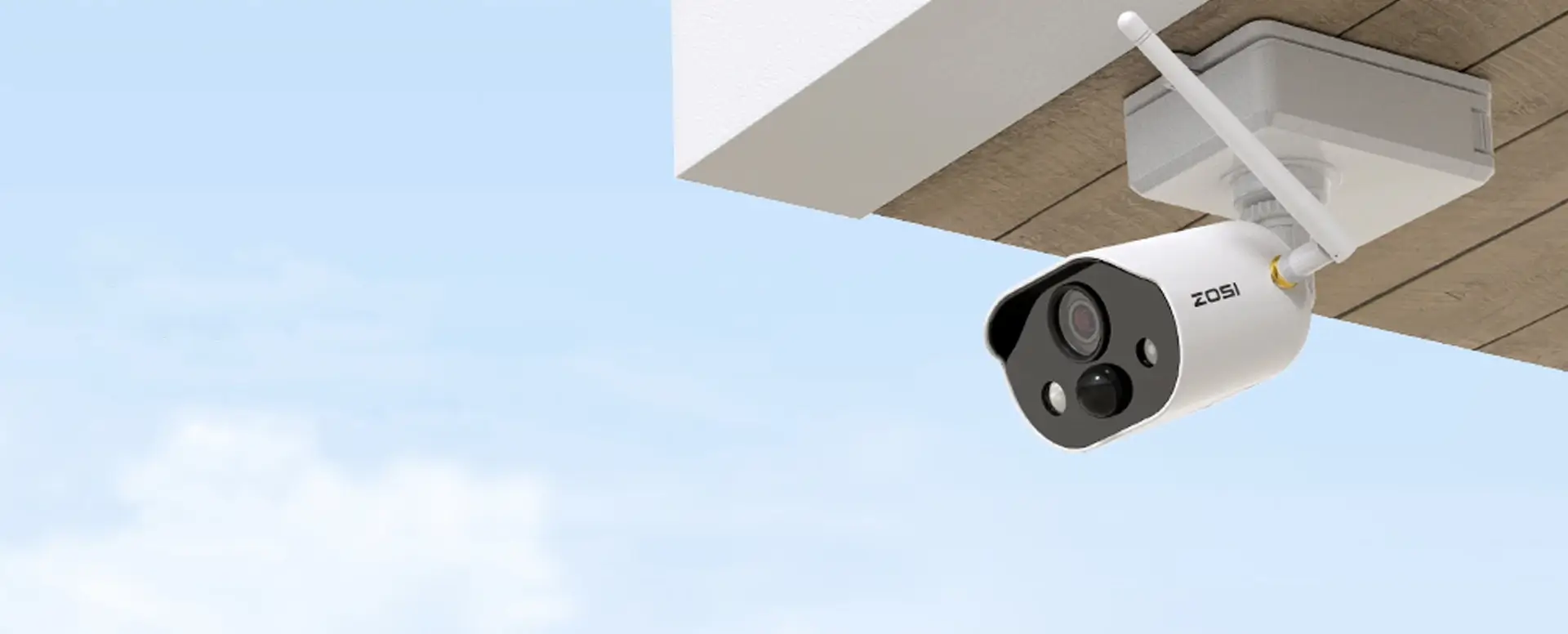When it comes to protecting outdoor security cameras and systems, people often have common questions such as how to keep bugs or spiders away from security cameras, protect CCTV cameras from rain or other elements, safeguard outdoor security cameras from theft or damage, prevent outdoor surveillance cameras from fogging up or clouding, and deal with security camera IR glare.
We want to share some easy fixes for these common issues and some helpful tips to protect your outdoor CCTV cameras, wire-free cameras, or wireless outdoor video security cameras.
Contents
How to Stop Outdoor Security Camera Being Vandalized, Blinded, or Stolen
Outdoor CCTV or IP video security cameras are vulnerable to theft and vandalism, as intruders may dismantle, blind, damage, or even steal the cameras or NVR/DVR to avoid detection.
Solutions:
To prevent outdoor surveillance cameras from being stolen, place them out of arm’s reach, such as up on walls, under eaves, soffits, or roof overhangs, and mount them using screw mounts or security mounts (Click here to find more prefect installation spots for security cameras).
Alternatively, you can place the NVR/DVR in hidden areas such as bookshelves or cupboards to prevent theft.
You can also use surveillance camera metal housings or covers to protect the camera and lens, keep them clean, and prevent theft.
Another option is to convert the outdoor security cameras to black and hide them from sight, or use skins or camouflage covers to make them tamper-proof and avoid being blinded by flashlights or laser pointers.
Additionally, you can hide the outdoor security cameras in birdhouses, as some homeowners do.
Check out this post to learn more about feasible ways to conceal your outdoor security cameras from intruders.
How to Keep Spider Webs, Bugs, or Insects away from Security Cameras
Outdoor security cameras, such as an infrared front door security camera or an outdoor CCTV camera with IR night vision in the backyard or driveway, often come with infrared lights or floodlights at night, which can attract mosquitoes, moths, bugs, or other insects over time. This can result in your outdoor CCTV camera or external security cameras becoming covered in spiderwebs, dead bugs, or insects.
This spiderweb and cobweb buildup can be annoying because it not only obstructs the external camera’s view but also causes false alerts, especially for outdoor motion sensor security cameras.
Solutions:
To keep bugs away from your outdoor video surveillance camera, you can use bug spray or insecticides around the housing/cover of the camera, or turn off the IR LEDs.
Conversely, some users suggest using petroleum jelly on the area surrounding the camera to prevent spiders from making webs on the external security camera or system. Additionally, natural insect repellents such as citrus, eucalyptus, lavender, or peppermint, can also help keep spiders from making cobwebs on the exterior camera.
You can also use spider/insect repellents, contact sprays, aerosol sprays, and web eliminators around the wireless outdoor security cameras but not directly on the lens, such as Permethrin, to eliminate bug infestations. Regularly cleaning the camera exterior, housing, enclosures, cover, or shield with a soft-bristled brush is another way to keep bugs away from security cameras while keeping your outdoor surveillance camera clean.
How to Protect Outdoor Camera from Cold Winter, Hot Summer, or Rain
When living in areas with very cold winters or hot summers, your video surveillance system or wireless outdoor security cameras might suffer if they’re not designed to operate in sub-zero cold weather or extreme heat.
Additionally, there are various weather conditions and elements that your outdoor cameras need protection from.
Solutions:
To begin with, check the outdoor security camera housing’s IP (ingress protection) rating, which indicates its ability to withstand elements.
For example, an outdoor surveillance camera with an IP rating of 66 can withstand impacts from solid matter like dust and liquid-like rainwater, rendering it completely waterproof.
Moreover, check the camera’s working temperature, either for CCTV or network IP cameras.
Many outdoor home security cameras, such as ZOSI C306 outdoor wire-free security cameras, typically operate in temperatures ranging from -20°C to +50°C (-4°F to 122°F) with humidity levels less than 90%.
Battery Powered Spotlight Security Camera - 1NC-306
- Wifi Connection
- Motion Activated Light & Siren Alarm
- Rechargeable Battery Powered
- AI Human Detection
- Two Way AudioAI Human Detection
- Proactive Sound & Siren Alarm
- 100ft Color Night Vision
You can also get a separate security camera rain cover, housing, box, or enclosure to protect outdoor home security cameras (wireless or wired) from rainwater, snow, dust, heat, and other elements.
When wiring up outdoor cameras (PoE or CCTV) outdoors on a pole, deck, pier, or other outdoor locations, cables and connectors should be waterproofed using waterproof lip cable connectors or plastic conduits. For outdoor cables, durable and outdoor-rated cables such as gel-filled Ethernet cables are great for PoE IP cameras.
Another way to protect security camera wires from rain is to use junction boxes to conceal the cables and connectors from sight.
If you choose not to use conduits or junction boxes, remember to conceal the holes as well, or else moisture may run along the surface of the electrical cable and get into the electrical connection points, resulting in costly repairs and significant trouble.
To cover security camera wire holes in the wall, you can fill the holes with waterproof materials like silicone and duct seal or use waterproof outdoor covers or feed-through bushings to conceal them.
Additionally, in extremely cold weather, it’s essential to inspect the camera enclosure for moisture or condensation and ensure there are no issues. You can also put a packet of silica gel inside the housing case to protect cables and connectors from frost or snow by regularly examining them and ensuring they’re in good shape.
Follow these practical tips to run outdoor CCTV cameras in extreme cold areas.
How to Deal with Security Camera IR Glare & Light Reflection
When an outdoor-mounted security camera is facing reflective surfaces such as ponds of water, glass panels, or car windows, it can cause lens glare and obstruct viewing.
Similarly, when the camera is placed inside the house, the window can cause obscurity or whiteout on your image.
Solutions:
To avoid these issues, place your front door or back door security camera outside your house to achieve better viewing.
Additionally, it’s advisable to adjust your outdoor surveillance camera’s viewing angle or avoid reflective objects to prevent light reflection and infrared flare.
Check out these additional tips for using security cameras through glass or glass windows, such as using anti-glare film for windows, utilizing external IR illuminators, or placing it on the window sill.
How to Stop Security Camera Fogging, Clouding, or Condensation
When assembling security video cameras, manufacturers typically seal them up air-tight to reduce the chance of moisture seeping into the lens.
However, some users have reported that their outdoor dome security cameras sometimes start fogging up at night, with moisture and condensation inside the camera housing.
In one instance, a user reported that their driveway camera started fogging up and obscuring the image in the early morning.
Solutions:
Sometimes, the fogging problem that occurs in the early morning goes away by itself, so there’s no need to clear the surface.
For long-lasting issues, placing a packet of silica gel inside the camera housing case is a solution to internal condensation.
In some cases, condensation happens due to the outdoor dome camera not being well-sealed. Try cleaning the dome camera inside and out first and press the foam ring firmly against the glass.
Regularly wiping the outer lens covers with a microfiber cloth can also protect your external surveillance camera.
Learn more practical tips on how to prevent a security camera from fogging up by clicking here.
How to Protect Outdoor Security Camera from Lightning and Thunderstorm
It’s essential to plan ahead to avoid lightning damage to your valuable equipment.

Recently, a homeowner shared her experience of her home being struck by lightning, resulting in the security camera going berserk – video loss, electrical currents, horizontal lines running across the screen (hum bars), or complete freeze or shutdown.
Solutions:
To prevent such issues, avoid mounting WiFi outdoor security cameras to metal poles because metal could be highly conductive during a power spike. Instead, use a security camera weather shield.
Ensure that your wired outdoor security system (CCTV or PoE security system) is grounded correctly to minimize damage by redirecting immense lightning current into the earth ground rather than discharging them, which may fry your security camera.
Lightning surge protectors can block voltage levels exceeding specific thresholds and channel extra voltage into the outlet’s ground line.
UPS (Uninterruptible Power Supplies) units can provide power to the camera during a power outage, eliminating concerns about camera power-off.
Living in areas where thunderstorms are common, you can learn more about protecting outdoor security systems from lightning by clicking here.
How to Avoid IP Security Camera Being Hacked or Watched
Network IP cameras are vulnerable to being hacked by ill-intentioned people who can either jam the wireless outdoor security cameras or decrypt your safety code.
Solutions:
The solution to the problem is to boost your network with WPA2 (Wi-Fi Protected Access II) security protocol.
Changing your passwords frequently and making your passphrase complicated is vital to secure your outdoor video security system.
Updating your outdoor property security camera firmware frequently helps address the loopholes and vulnerability. (Learn more about how to update your camera firmware)
Find out more about how to secure your CCTV or IP security camera from hacking.
How to Deal with Outdoor Security Cameras Image Problems
If your security cameras like the wireless outdoor security camera and outdoor PoE camera constantly or occasionally experience some issues with the videos/images like video loss, no videos, images flickering, rolling lines on the screen, black screen at night, etc.
Solutions:
Check outdoor security camera cables to see if they are in good condition and not damaged or frayed. Here are some common tips to troubleshoot security cameras like checking camera power/connections, rebooting the camera, factory reset cameras, turn to their tech support.
Don’t mount your outdoor security cameras on a metal surface or conductive surface, for which will generate electrical interference that impacts camera videos and images. Try using a block of wood in between if you have to.

